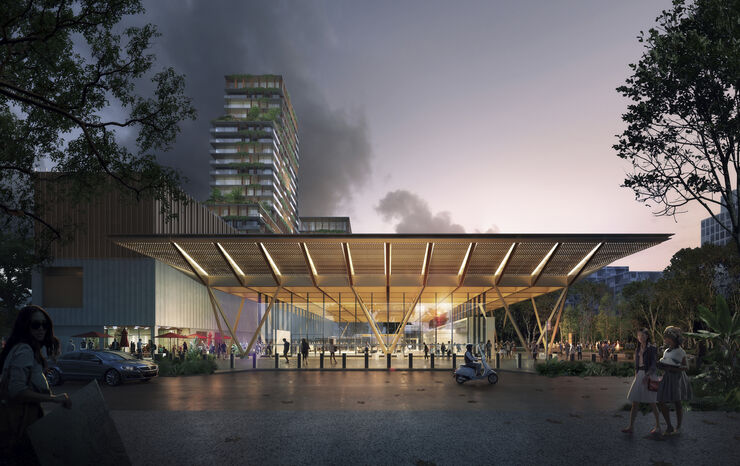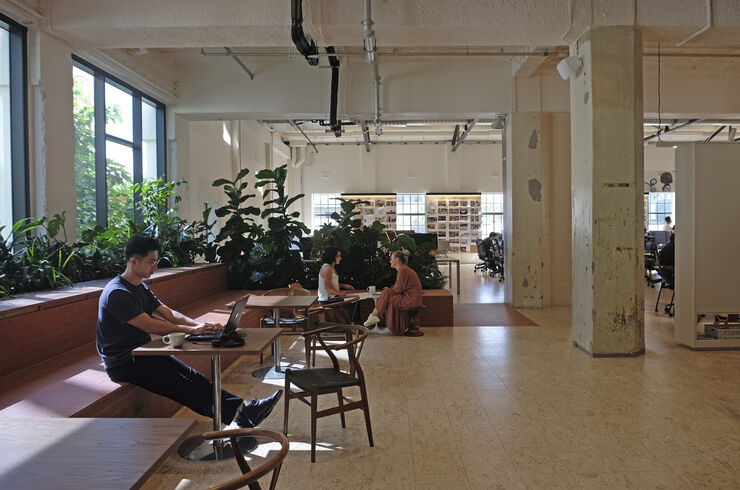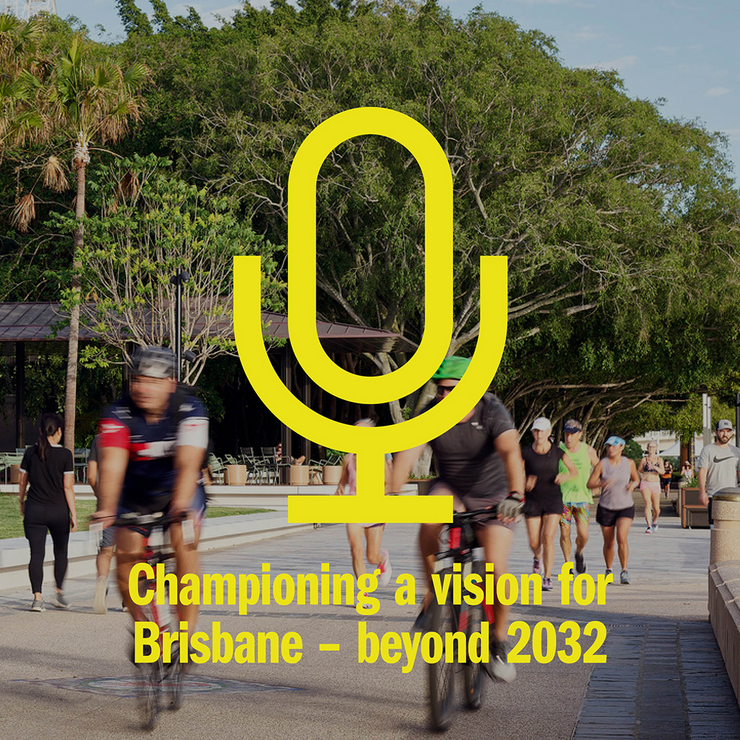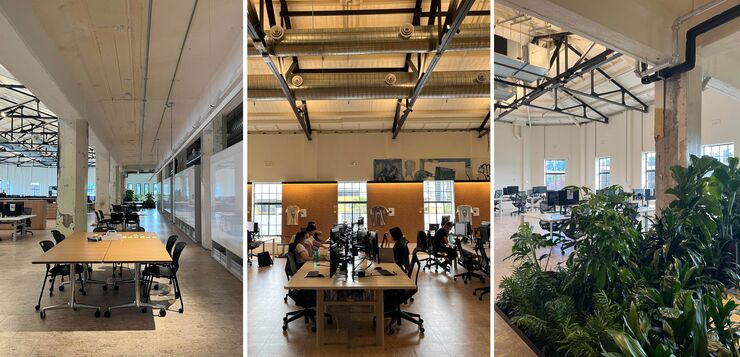Nothing about us without us: Cross River Rail’s legacy of inclusive design
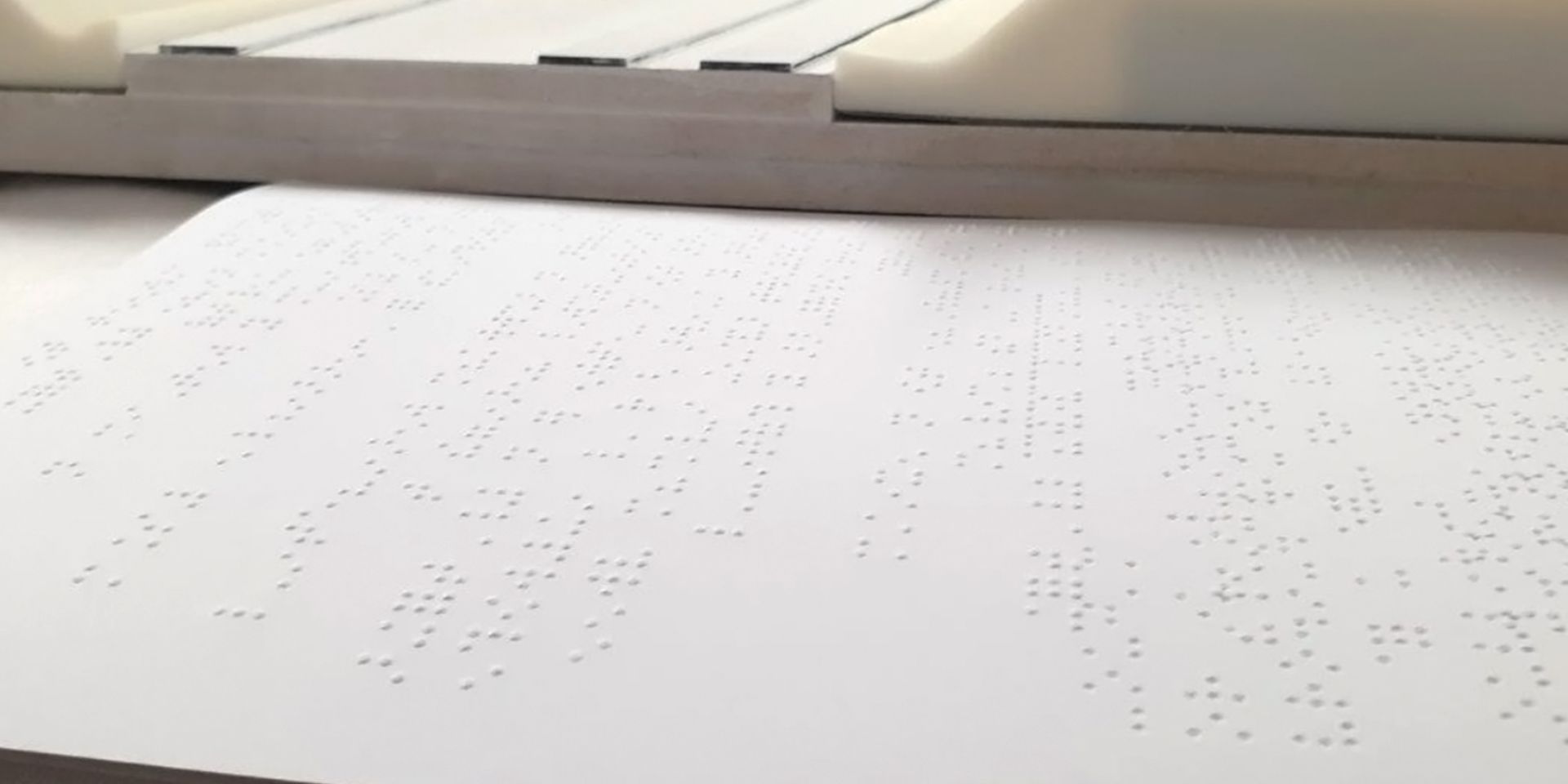
Across both the client and design side, a focused, committed team has collaborated to make Cross River Rail a model in truly accessible transport. Three women at the centre of the inclusive design process share what they’ve learned on one of Australia’s most significant rail projects.
By Camilla Siggaard Andersen, Senior Researcher at Hassell
South East Queensland’s transport network is under pressure, with the population of the region expected to swell by 40% between now and 2036. With the existing rail network close to capacity and heavily constrained by a single river crossing, there’s an urgent need to expand.
Cross River Rail promises to transform travel across the region, with a new 10.2 km rail line incorporating 5.9 km of twin tunnels under the Brisbane River and city centre.
The mega-project is being designed and delivered via two contracts – one a Public-Private Partnership focusing on the new underground stations in strategic inner-city locations while the other is an Alliance upgrading the existing, above-ground stations.
By increasing the frequency of train services and improving transport connections, Cross River Rail is laying the groundwork for an efficient ‘turn up and go’ public transport system for the region. At the same time, the new station precincts will act as catalysts for urban regeneration and development in Brisbane.
And, thanks to an ambitious and innovative accessibility engagement program, the passenger experience should be better than ever.
A CONVERSATION ON COLLABORATION
To tell the story of how Cross River Rail is creating a legacy of inclusive design, I invited Cobi Murphy, Customer and Network Change Lead, and Jessica Wright, Accessibility Engagement Coordinator – both from the Cross River Rail Delivery Authority – to join a conversation with Hassell’s own Tanya Golitschenko, architectural team lead on the project’s Rail Integration and Systems (RIS) scope of work.
Working closely with an Accessibility Reference Group (ARG) made up of community members with diverse abilities, Cobi, Jessica, and Tanya have all been instrumental in ensuring the upgraded above-ground stations – like the new ones under development – provide users with a truly equitable, seamless experience.
“Nothing about us without us” is the consultative approach they’re taking on the project, and it sets the tone for this article – as well as for the great work that’s gone into securing Cross River Rail’s accessibility standards.
This record of my conversation with Cobi, Jessica, and Tanya dives into the aspirational and practical aspects of their work, which we hope will inspire similar approaches on rail projects in Australia and beyond.
CAMILLA: Could you describe how the Delivery Authority, Accessibility Reference Group, and design team have worked together in practice?
COBI: Sure. So, as the Delivery Authority, we set the strategic direction for the project. We identify when consultations are required, facilitating engagement, and driving the implementation of the accessibility outcomes.
Early on, we developed an Accessibility Action Plan for Cross River Rail, which also outlines our approach to achieving accessibility outcomes.
Cobi Murphy, CRR Delivery Authority
JESSICA: In practice, we organise stakeholder meetings and workshops around topics that align with the design and construction program. We also consult with the members of the ARG to make sure that their specific interests make it onto the agenda. We rely on our contractors to present content for these discussions, so we can identify and address any issues together, before designs are finalised.
TANYA: That’s right. Jess always provides the agenda for these forums, while I pull together the relevant material to share with the group. At the beginning, we were looking at the wider stations, but as we’re going along, the topics are becoming more focused and specific. We’ve had a meeting just on lifts and another on signage, for example.
CAMILLA: How often do you meet?
JESSICA: The ARG meet regularly, about once a month. It’s one of my favourite things about my job, actually. Then we set up working groups around that, which get together to deep dive into a specific design aspect or experience.
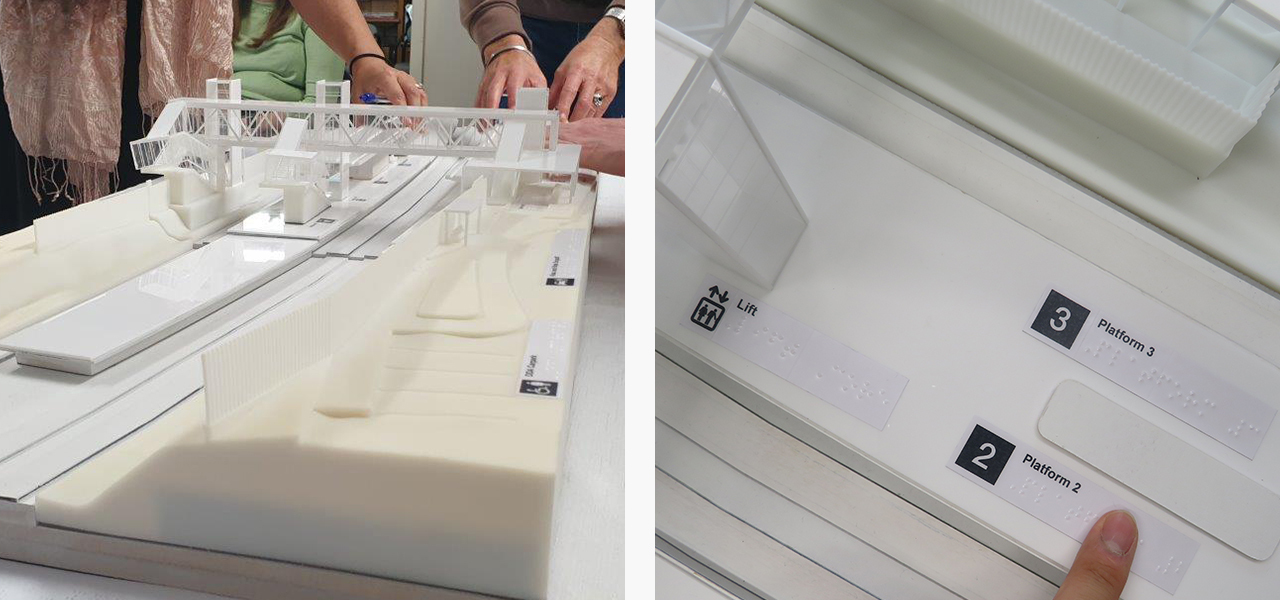
CAMILLA: What activities did you use to gather input and feedback on accessibility?
TANYA: We’ve been engaging in a whole range of different ways, actually. Because of COVID-19 restrictions, some meetings have simply had to be online. In these cases, we’ve had interpreters for some of our deaf participants. Then we’ve had face-to-face workshops. It really helps to break down barriers to have everyone in the same room, I find, and it’s a lot easier to progress with everyone’s input.
To make sure that we’re capturing people’s lived experiences, we’ve also organised quite a few site tours. Navigating a space with a person who is in a wheelchair, for example, is key to identifying pressure points such as around lifts, stairs, and ground surfaces.
JESSICA: I completely agree. I think the site visits have been a really important part of the overall process.
You can’t beat getting into a real-world environment and seeing how someone with a disability actually gets around and uses that space.
Jessica Wright, CRR Delivery Authority
TANYA: In terms of bringing our designs to life for the users, we also created a 3D tactile model of one of the stations. It has turned out to be such a successful engagement tool that we’re already adding other stations.
JESSICA: In relation to that, we’ve engaged quite a lot with Braille House, which is an organisation that’s part of the community this railway line will serve. They helped with the 3D model and also created 2D tactile maps to enable us to better communicate with people who have impaired vision. If you want to create an inclusive design, you really have to make the consultation process accessible to everyone in the community.
CAMILLA: What were some of the lessons you took away from these forums?
JESSICA: I think both our members and our subject matter experts learned a lot through the process. On the one hand, people like Tanya got to hear directly from the end users what they’d like to see, and on the other hand, our members could learn from experts like Tanya if there were issues or constraints which might require a compromise to be reached.
TANYA: Absolutely. I’ve learned so much from our accessibility participants.
As an architect, you’re always guided by legislation and standards. But there’s a big difference between doing something because you have to, and doing it because you understand the difference it will make in someone’s life.
Tanya Golitschenko, Hassell
CAMILLA: The breadth of activities you describe is really incredible. Would you say Cross River Rail has gone above and beyond what might be expected of this type of project?
COBI: From the outset, there was a general acknowledgement that our project is about breaking down barriers to public transport use for all – and all abilities. We’re not only building infrastructure but guiding change within the industry through the accessibility outcomes we’re implementing.
JESSICA: Cross River Rail will make a big difference in terms of providing transport capacity in and out of Brisbane. We absolutely wanted to make sure that the new network would be accessible to all users. But the legislation in this area is 20 years old, and it was clear there was much more we could do to push the boundaries and reach best practice outcomes. Based on what we’ve learned, we’ve created a document to guide other public transport infrastructure projects within Queensland.
It’s been interesting to observe that with the current legalisation you can design perfectly compliant stations, and yet you’re not really providing great accessibility outcomes.
Tanya Golitschenko, Hassell
TANYA: Hopefully what we’ve done becomes a benchmark for other projects.
CAMILLA: What are some practical examples of feedback you’ve incorporated into the project?
TANYA: One of the things that comes to mind is the size, functionality and fit-out of our lifts. We made the compartments much bigger than the standard to enable all types of wheeled devices to turn a full 360 degrees. We also added mirrors in the corners so people can see what’s behind them without turning around, and we tested the location of buttons and colour contrasts.
When you get to the platform, a common issue in rail is the gap between the station and the train. Because we are upgrading existing infrastructure, we had to mitigate quite a large step. We identified a solution, which was to implement a rubber gap filler with a frangible edge. Before specifying this product, which has never been used in Queensland before, we built a 1:1 prototype for our ARG members to test.
Even small design changes can help provide a sense of dignity to people with disabilities.
Cobi Murphy, CRR Delivery Authority
JESSICA: We will still have a boarding ramp if people need it, but overall the rubber gap filler is a great solution that will help increase people’s independence and safety in travel.
Another big win was the design of the accessible toilets for the stations. We created a mock-up in a room so we could try different configurations and placements of buttons and rails and so on.
COBI: Even small design changes can help provide a sense of dignity to people with disabilities. For example, we had one of our members request a full length mirror in the bathrooms so they’d be able to check the position of their legs in the wheelchair before moving on with their journey. The Australian standard is to provide a mirror above the waist, but it was obvious that there was a lot of value to simply adding another longer mirror.
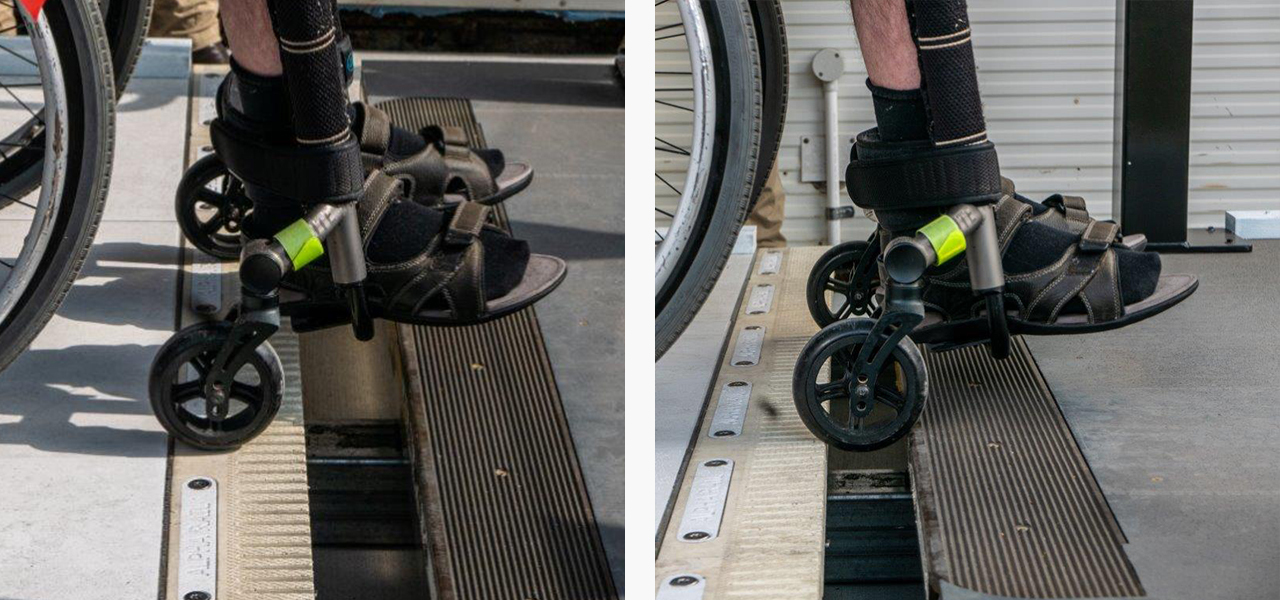
CAMILLA: Do you have any recommendations for other people and projects looking to raise their inclusive design standards?
COBI: I’d say you need to get into the design process as early as possible.
The sooner you start thinking about these things, the more options you will have for using innovative engagement methods and developing better overall solutions.
Cobi Murphy, CRR Delivery Authority
JESSICA: I’d say, you have to make sure that you involve people with lived experiences. As much as legislation and standards help to guide things and provide consistency, they will never replace local knowledge and the experiences of real people in real places.
TANYA: I absolutely agree. I’d also highlight the importance of having a process that enables designers to speak directly to end users from the very beginning of the project. More often than not, we’re kept at arm’s length and the process is owned by the client or a contractor. Having a contract that allows us to speak directly to the end users can really help the creative process and add value to the project in the long-term.
COBI: Our contracts have definitely been built to engage and it is important that all parties are signed up to achieving the objective to break down barriers for people with disabilities.
CAMILLA: How have you all enjoyed being part of this journey?
JESSICA: It’s definitely been rewarding. I’m lucky to have a job that allows me to engage with people who have unique and wonderful personalities because of the challenges they’ve had to overcome, living with a disability.
TANYA: I’ve found it absolutely rewarding as well.
I’ve been designing transport hubs my whole career, and I’ve never experienced this type of engagement. I’m really excited for our project because of it.
Tanya Golitschenko, Hassell
LESSONS FOR LARGE-SCALE INFRASTRUCTURE
Looking ahead to other initiatives, Cobi and Jessica are investigating how they can incorporate input from an even wider group of stakeholders, reaching out to people with cognitive disabilities and inviting public servants like fire fighters and police officers to the forums. Tanya is busy translating feedback into detailed design as the construction of Cross River Rail chugs along.
While that valuable work continues on the above-ground stations, there are inclusive design stories coming from work on the underground stations, and we plan to explore those soon.
Zooming out further, we want to look at how lessons from Cross River Rail and other inclusive design initiatives are incorporated into large-scale infrastructure projects around the world, shining a light on exemplars in mobility equity across our cities and communities.
For more insights into inclusive design, check out our report ‘Equal access is not an optional extra’.
